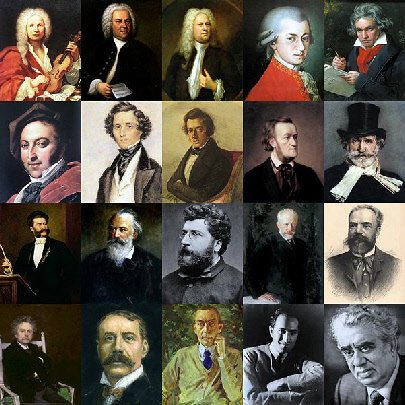1750-
The word Classical has strong connotations, conjuring up the art and
philosophy of Ancient Greece and Rome along with their ideals of
balance, proportion and disciplined expression. The late Baroque style
was polyphonically complex and melodically ornate. The composers of
the early Classical period changed direction, writing music that was much
simpler in texture. It is in some ways ironic that two of J.S. Bach's
children, Carl Philipp Emanuel (C.P.E.) and Johann Christian (J.C.), were
among the leaders of this new artistic movement. Their father had been
the greatest master of the high Baroque style, and it was his children who
made that style obsolete.
Homophony-
distinct-
were developed to accommodate the transformation. Sonata form is by
far the most important of these forms, and one that continued to evolve
throughout the Classical period. Although Baroque composers also wrote
pieces called sonatas, the Classical sonata was quite different.
The essence of the Classical sonata is conflict. A highly simplified example
of such a conflict might be between two themes of contrasting character.
This contrast would be intensified during the course of the sonata, then
finally resolved. In some ways, there is a resemblance to the skeleton of a
play: we meet characters, a conflict is developed and finally a resolution
reached. Sonata form allowed composers to give pure instrumental music
a recognizable dramatic shape. Every major instrumental form of the
Classical era, including the string quartet, symphony and concerto was
molded on the dramatic structure of the sonata.
One of the most important developments of the Classical period is the
growth of the public concert. Although the aristocracy would continue to
play a significant role in musical life, it was now possible for composers to
survive without being the employee of one person or family. This also
meant that concerts were no longer limited to palace drawing rooms.
Composers started organizing concerts featuring their own music, and
often attracted large audiences. The increasing popularity of the public
concert had a strong impact on the growth of the orchestra. Although
chamber music and solo works were played in the home or other intimate
settings, orchestral concerts seemed to be naturally designed for big
public spaces. As a result, symphonic music (including opera and
oratorio) became more extroverted in character. Composers gradually
expanded the size of the orchestra to accommodate this expanded
musical vision.
